INSIDE ISSUE 19.02 | Jan. 10, 2020
 BIG STORY: Lawmakers ready for big debate on Santee Cooper’s future
BIG STORY: Lawmakers ready for big debate on Santee Cooper’s future
NEWS BRIEFS: Session reconvenes Jan. 14, private budget meeting, more
COMMENTARY, Brack: Finish the job to make 4-year-old kindergarten statewide
SPOTLIGHT: AT&T
MY TURN, Spence: State’s war against poor shows disconnect with working people
FEEDBACK: Send us your thoughts
MYSTERY PHOTO: Mystery tunnel
S.C. ENCYCLOPEDIA: A history of our General Assembly
Lawmakers ready for big debate on Santee Cooper’s future
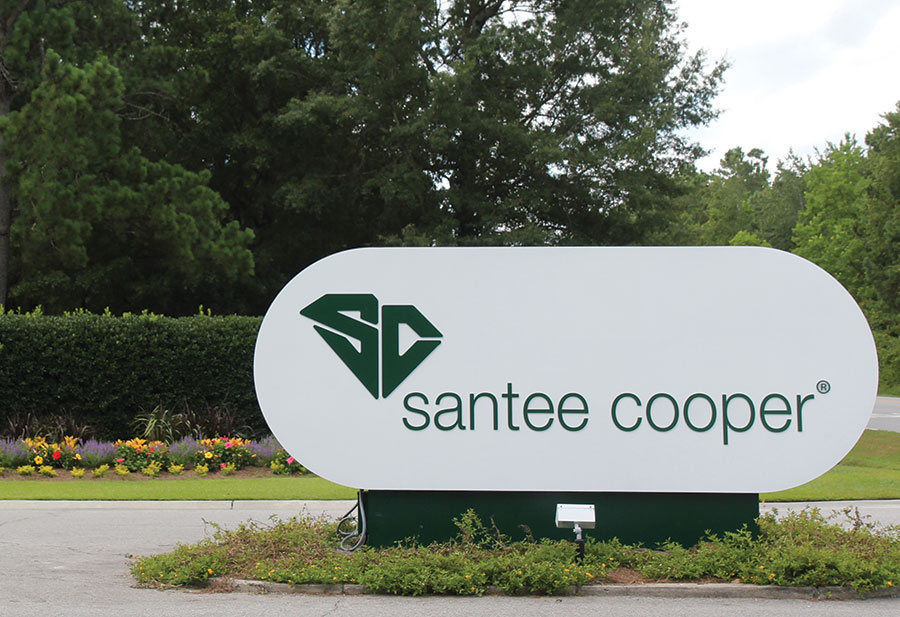
By Lindsay Street, Statehouse correspondent | It’s being billed as the decision that could ripple through decades if not the century: Should the state sell, change the management structure or simply reform its public power utility, Santee Cooper?
The decision is expected to be made this session.
“We’ve got one opportunity to get this right and this decision we will make this session will affect South Carolina, if not for decades, then centuries to come,” House Ways and Means Chairman Murrell Smith of Sumter said. “It’s very important we get this right and we look at it objectively and critically.”
The Moncks Corner-based utility is massive. It provides power to nearly 2 million customers in every county in the state. It employs more than 1,650 people. In addition to generating, transmitting and selling power, the utility also manages lakes and two water systems, and works in economic development deals.
But it found itself in trouble in 2017. Santee Cooper owned 45 percent of a construction project at V.C. Summer that sought to build the next generation of nuclear power generators. After a decade and $9 billion spent between the two utilities, Santee Cooper pulled the plug on the project, leading its partner South Carolina Electric and Gas to do the same. The private utility was sold to Dominion Energy in the fallout, and the discussion of what to do with Santee Cooper began in the legislature.
A sale or structural change could affect taxpayers, ratepayers and the direction of energy generation in the state, experts say.
The timeline
On Jan. 15, S.C. Department of Administration is required by law to submit a report detailing bids for reforming, managing or privatizing Santee Cooper. Lawmakers passed H. 4287 in May outlining the process. The agency began accepting bids in August. Reportedly, there are multiple bids. In 2019, Nextera Energy of Florida and Duke Energy of North Carolina sought to purchase the utility. Dominion Energy previously expressed a desire to manage it.
- Related: Dominion Energy has agreed to pay $192.5 million to settle investor lawsuits stemming from the failed V.C. Summer nuclear project. Read more.
Santee Cooper CEO Mark Bonsall confirmed this week that the utility has submitted a reform plan to the Department of Administration.
“We are going to be suggesting a number of governance reforms,” Bonsall said of the report that should be made public Jan. 15. “I truly feel we have put together the best plan we could.”
The agency can request a 60-day extension, but as of Statehouse Report’s deadline, no such request has been made. An effort was made to confirm that no extension would be sought, but Department of Administration media liaison Kelly Coakley did not respond to an email sent to her Monday, nor a phone message left at her office Thursday.
After receiving the report, the House Ways and Means Committee and the Senate Finance Committee are required to issue recommendations based on that report within 30 days.
Then the bodies will take up a resolution that would approve a sale or management change, or implement reform at the utility.
Beyond philosophy
How lawmakers arrive to their decision will be based on a number of factors. Many told Statehouse Report they will make the decision based mostly on how any move affects ratepayers and taxpayers.
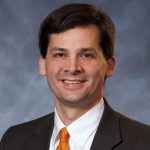
S.C. Senate Majority Leader Shane Massey of Edgefield said he will be looking at the numbers.
“Philosophically, I don’t think the state ought to be in the utility business but the problem is we are and we’ve been in the utility business for over 80 years now, you can’t just snap your fingers and say, ‘OK now let’s get out.’ There are a lot of other considerations,” he said, adding he was going to look at rates, energy generation and debt in the coming report.
Moncks Corner Republican Rep. Sylleste Davis, who formerly worked for Santee Cooper, said she will look at the numbers despite her strong feelings that Santee Cooper should remain public.
“I think what’s important for legislators to look at is the information, the forecasted rates, because that, ultimately, is how we best protect the ratepayer, right, by ensuring they have the lowest rates possible,” Davis said.

“Santee Cooper, at the end of the day, will have the ability to pass along the lowest cost to the ratepayer because of their ability to borrow money at a lower rate. They don’t have shareholders to satisfy. They aren’t working for a profit margin. Their sole purpose is to have low cost high reliability.”
Smith said he is keeping an open mind.
“I’m going to follow the facts … Everyone needs to look at this without any prior determinations made,” Smith said. “We’ve got to make sure that the rates are stable, that we are not trading temporary gain for long term sacrifice.”
Smith floated having additional advisors work with lawmakers as they make the decision.
“I don’t know what that means yet. Are there attorneys that can help us? We’ve got a lot of staff members who have been involved in this process for years now,” he said. “We need some good solid advice and … these are not issues we routinely deal with in the General Assembly.”
- Have a comment? Send to: feedback@statehousereport.com
Session reconvenes Jan. 14, private budget meeting, more
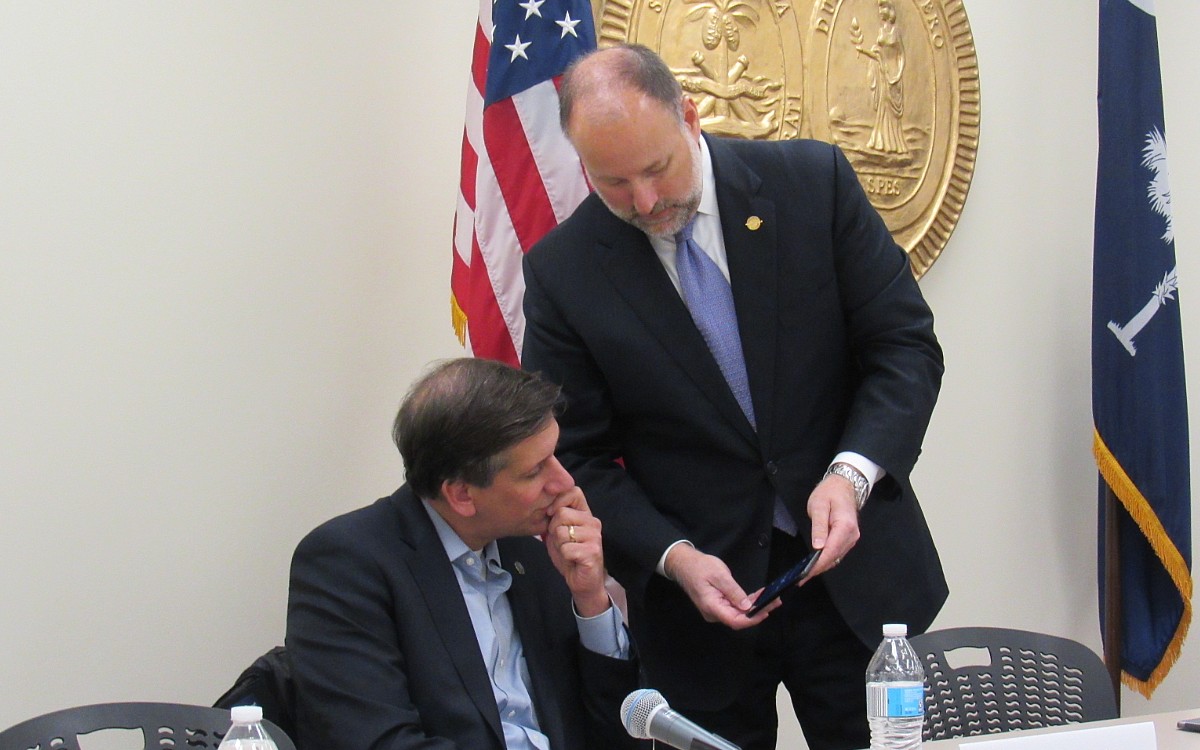
Staff reports | When the second year of session convenes Jan. 14, the S.C. House of Representatives will have a few Senate-passed bills awaiting third reading, while the S.C. Senate could head straight into debate on the House-passed large education package.
In the House
On the House’s calendar, up for third reading next week, is Senate-passed bill 11 that expresses the General Assembly’s desire to make Daylight Saving Time be the year-round standard should Congress amend a federal law to allow states to make that change.
Here are some items up for second reading in the House:
- Bans. House Bill 3087 seeks to probit approval of an action supporting seismic testing for oil or natural gas on land or in water of the state of South Carolina; and its rival bill 3471: A ban on state agencies or local governments from impeding plans to deter or prohibit seismic testing infrastructure; and,
- Servers. The House will take up Senate Bill 342, the proposed Responsible Alcohol Server Training Act that requires training for those serving alcoholic beverages.
- See the House calendar here.
In the Senate
Senate Education Chair Greg Hembree of Horry County on Thursday said the large bill that does everything from teacher pay raises to allowing the state to remove chronically failing school boards will be “the first major debate” of the session.
Meanwhile, the Senate could get a different bill to Gov. Henry McMaster’s desk before that debate results in final votes as it looks at third reading of a House-passed Bill 3576 that would establish the South Carolina Workforce Industry Needs Scholarship, which would offer scholarships for students attending technical college in certain industry-focused programs.
Here are some items up for second reading in the Senate:
- Higher education. Senate Bill 298 seeks to fund higher education at the same percentage as the general fund revenues increase.
- Guns. Senate Bill 640 would mandate every clerk of court to report to the state Law Enforcement Division within 10 days of issuance of a restraining order, order of protection or another order that would prevent the possession of a firearm.
- See the Senate calendar here. — reported by Lindsay Street
In other news:
![]() S.C. budget writers hold private meeting in Charleston. House Ways and Means Chair Murrell Smith of Sumter told Statehouse Report this week that he and six subcommittee chairs would meet on budget priorities in Charleston for two days. S.C. Press Association attorney Jay Bender said, under state law and legal precedent, such a meeting requires public notice and being open to the public. But when asked for meeting details, Smith said it was not a public meeting. Statehouse Report sent an email to Smith and his staff asking for minutes from the meeting, but has not received a response as of deadline. The private meeting, not open to the public, came out the same week Smith vowed transparency in the budget process in an article with The State. — LS
S.C. budget writers hold private meeting in Charleston. House Ways and Means Chair Murrell Smith of Sumter told Statehouse Report this week that he and six subcommittee chairs would meet on budget priorities in Charleston for two days. S.C. Press Association attorney Jay Bender said, under state law and legal precedent, such a meeting requires public notice and being open to the public. But when asked for meeting details, Smith said it was not a public meeting. Statehouse Report sent an email to Smith and his staff asking for minutes from the meeting, but has not received a response as of deadline. The private meeting, not open to the public, came out the same week Smith vowed transparency in the budget process in an article with The State. — LS
2019-2020 could have $507 million surplus. In a meeting with journalists Thursday, state Revenue and Fiscal Affairs Office staff offered data showing the current fiscal year is on track to have a $507 million surplus from lowball revenue projections. Add to that another $350 million in surplus funds from the 2018-19 budget. That leaves state legislators with a pot of more than $850 million in surplus funds to be used for non-recurring expenses. Executive Director Frank Rainwater told Statehouse Report said the agency missed the revenue forecast largely due to “volatile” revenue sources difficult to predict, such as corporate income tax, and due to the state’s new revenue source from online sales. This is in addition to the projected $1 billion in extra revenues predicted for the 2020-2021 fiscal year. Other notes from Revenue and Fiscal Affairs, via Rainwater:
-
- FY 2019 revenue growth more than doubled estimates (projected: $288.7 million, actual: $696.1 million), and is expected to grow further to make up the $863 million 2020-21 general fund surplus.
- The 20-21 general fund surplus will be about 9 percent higher than expected due to strong economic factors and increased collections, including corporate income tax growth of about $100 million.
Asked how lawmakers could effectively utilize the surplus, State Sen. Vincent Sheheen, D-Kershaw, said as much as $240 million could be devoted to teacher pay raises, with $50 million more going to state colleges and universities. The state Bureau of Economic Advisers meets on Feb. 15 to formally consider the newest fiscal estimates. — Lindsay Street and Sam Spence
Senate Ed chair vows reform package early on. S.C. Senate Education Chair Greg Hembree of Horry County told reporters Thursday that the House-passed education package will hit the Senate floor in the first few days of session. On Friday, teacher group SCforEd — which has opposed the measure, along with S.C. Education Association — tweeted a statement opposing the bill coming to the floor. Read it here. Also during the meeting with journalists, S.C. House Education and Public Works Chair Rita Allison, R-Spartanburg, said she was unaware of SCforEd’s March 17 deadline for lawmakers to comply with their agenda, which includes a teacher bill of rights. — LS
Massey reiterates not enough votes for ‘fetal heartbeat’ bill. Senate Majority Leader Shane Massey of Edgefield told reporters Thursday something he told Statehouse Report last week: The Senate GOP may lack the votes to bring H. 3020 to the floor. Read our coverage from last week. — LS
McMaster proposes statewide 4K for state’s poorest students. Gov. Henry McMaster is expected to make a $53 million proposal that would expand the 4K program to the remaining 17 school districts without the full-day pre-kindergarten for low-income 4-year-olds. Read more. — LS
PURC seeks more time to evaluate PSC commissioner candidates. The Public Utilities Review Committee evaluated this week 17 candidates for four open positions on the Public Service Commission, winnowing the list down to six qualified candidates and rejecting the commission’s current chair Swain Whitfield. Lawmakers on the committee say they want more time to find more qualified candidates. Read more. — LS
2020 candidate calendar
 Throughout the campaign season, we are working to keep South Carolina informed of candidate events in the state. Have an event you want us to know about? Email us at 2020news@statehousereport.com.
Throughout the campaign season, we are working to keep South Carolina informed of candidate events in the state. Have an event you want us to know about? Email us at 2020news@statehousereport.com.
Bennet swings through South Carolina. Colorado Democratic Sen. Michael Bennet will return to South Carolina this weekend in his bid for the Democratic presidential nomination. Here are the events:
- Bully Pulpit Series: 12:30 p.m. Jan. 10 at College of Charleston;
- Wings for Kids Afterschool Program: 2:15 p.m. Jan. 10 at Bay Street Biergarten in Charleston;
- Meet and greet: 5:30 p.m. Jan. 10 at Bay Street Biergarten in Charleston;
- Flood tour with Charleston Chief Resilience Officer Mark Wilbert: 9 a.m. Jan. 11. Location not yet announced;
- Charleston House Party: 10:30 a.m. Jan. 11 at 100 Queen St., Charleston; and,
- James E. Clyburn Political Fellowship Turn it Blue BBQ: 12:33 p.m. Jan. 11 at 1505 King St., Charleston.
Debate to be held in Charleston. Democratic candidates will convene in Charleston on Feb. 25 for a nationally-televised debate that is four days before the state’s primary. No word yet on tickets, but we’re told that the national party will be in charge.
- Have a comment? Send to: feedback@statehousereport.com
Finish the job to make 4-year-old kindergarten statewide

By Andy Brack, editor and publisher | The math is easy. With about about $2 billion in new or surplus tax revenues for the state’s coming fiscal year, there’s more than enough money for the General Assembly to do something it should have long done: Make 4-year-old kindergarten available for all of South Carolina’s poor children.
 Traditionally, kindergarten begins in public schools for 5 year olds. But starting earlier in school makes a difference, according to study after study. For South Carolina to get more at-risk kids in kindergarten, the state will have to steer about $50 million to 4K programs out of the $1 billion in the state’s new recurring revenues — money that will come to the state without raising taxes because of old-fashioned growth.
Traditionally, kindergarten begins in public schools for 5 year olds. But starting earlier in school makes a difference, according to study after study. For South Carolina to get more at-risk kids in kindergarten, the state will have to steer about $50 million to 4K programs out of the $1 billion in the state’s new recurring revenues — money that will come to the state without raising taxes because of old-fashioned growth.
This is a no-brainer. And, it seems, it’s now something Republican and Democratic leaders actually agree on. Gov. Henry McMaster, a Republican, also reportedly will call for more 4K money when he releases his budget recommendations as the General Assembly reconvenes next week.
“We may take it the rest of the way,” said state Sen. Vincent Sheheen, a Kershaw Democrat who for years has been steering more money to help poor 4-year-olds get kindergarten.
GOP state Sen. Greg Hembree, who chairs the Senate Education Committee, said he was for expanding 4K. “We’re not going to make quantum leaps (in education) in the eighth grade, but we can make great strides in the earlier grades,” he said during a legislative preview for reporters.
The time for finishing the job is now. It’s something lawmakers have known for awhile they should do.
Fifteen years ago as the General Assembly was being sued by poor school districts for doling out public education dollars inequitably, it put together a pilot program to offer 4-year-old kindergarten in those districts. The program had success.
In 2013, Sheheen and other lawmakers worked to expand 4K offerings beyond the 33 districts that were part of the pilot program. By 2016, about 30 more districts received 4K monies for at-risk students based on the district’s poverty rating. If a district had a poverty index of 75 or higher, it got money.
But that left out poor students who lived in more affluent districts where the poverty index could be far below the 75 rating. Those students, just as poor as kids on the so-called Corridor of Shame school districts, couldn’t get access to 4K monies because of their zip code. It was another inequity. At the time, an estimated 8,250 4-year-olds in South Carolina — one in seven of kids this age — were at risk but couldn’t qualify for earlier childhood education.
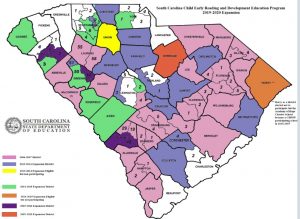
Currently in 62 of 79 South Carolina school districts, the state offers free 4-year-old kindergarten to at-risk children, who are defined as those who are eligible to receive Medicaid.
According to legislative sources, this translates to 4K instruction being given to about 13,000 students in the 62 school districts. Another 5,000 qualify to attend free 4K classes, but don’t participate in public programs for one reason or another.
In the remaining 17 districts, about 15,000 students still are not being served by 4K programs. That would be solved if the state ponied up $50 million in recurring revenue.
Thirty-nine poor school districts filed a lawsuit in 1993 saying they were not receiving fair funding. It took 21 years for the case to wind its way through the courts and years for the legislature to do more to reduce inequities in education funding.
There was resistance to the pilot program. The move to expand the pilot program only got funded through a procedural budget move because it wouldn’t have passed on a straight up-or-down vote.
But like a soup that stews for a long time to become more palatable, state leaders finally seem to have understood, matured and accepted that 4K education makes a difference — and to continue to keep it from poor kids who live in more affluent districts also isn’t fair.
In this surplus and election year, let’s hope state legislators have the backbone to complete a job that should have been finished long, long ago.
- Have a comment? Send to: feedback@statehousereport.com.
AT&T
 The public spiritedness of our underwriters allows us to bring Statehouse Report to you at no cost. Today’s featured underwriter is AT&T Inc.
The public spiritedness of our underwriters allows us to bring Statehouse Report to you at no cost. Today’s featured underwriter is AT&T Inc.
AT&T Inc. (NYSE:T) helps millions around the globe connect with leading entertainment, mobile, high speed Internet and voice services. We’re the world’s largest provider of pay TV. We have TV customers in the U.S. and 11 Latin American countries. We offer the best global coverage of any U.S. wireless provider*. And we help businesses worldwide serve their customers better with our mobility and highly secure cloud solutions.
Additional information about AT&T products and services is available at http://about.att.com. Follow our news on Twitter at @ATT, on Facebook and YouTube.
* Global coverage claim based on offering discounted voice and data roaming; LTE roaming; voice roaming; and world-capable smartphone and tablets in more countries than any other U.S. based carrier. International service required. Coverage not available in all areas. Coverage may vary per country and be limited/restricted in some countries.
SPENCE: State’s war against poor shows huge disconnect
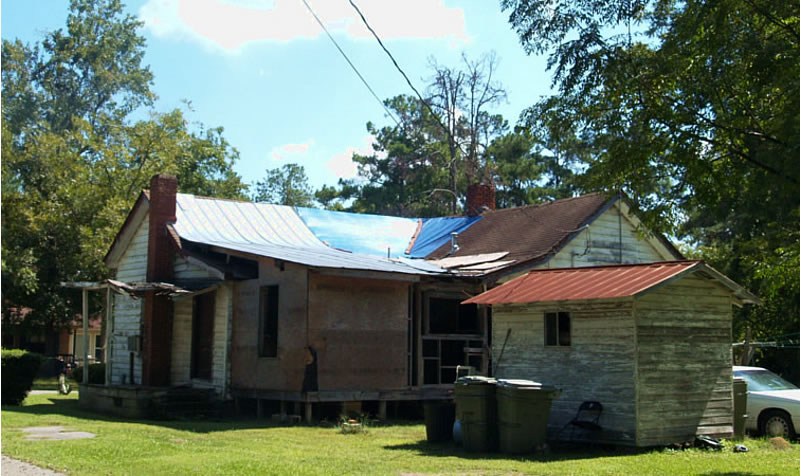
By Sam Spence, special to Statehouse Report | South Carolina is a poor state. Past the “Great Day” greetings and glossy magazine rankings, in a slew of economic metrics, many South Carolina residents rank among the poorest in the nation.

The war waged against poor people in South Carolina is cynical political theater with deadly consequences for thousands just scraping by as backslapping politicians do little to seriously address the problem. Many times, leaders have opted for policies that go out of their way to punish poor people for being poor.
Two weeks before Christmas, Gov. Henry McMaster announced that the state received a waiver for a new Medicaid “community engagement initiative.” The waiver would require some of the state’s poorest residents receiving health insurance through Medicaid to work at least 80 hours per month to remain insured. Those most affected would be low-income parents, according to an initial report from the Georgetown University and S.C. Appleseed Legal Justice Center. Of the adults who rely on Medicaid and are targeted, 86 percent are mothers and 51 percent are African American — the state’s nonelderly population is just 28 percent African American, according to the report. Rural areas would be especially hard hit.
Faced with the new requirements, the groups conclude that many poor in South Carolina could very well lose their coverage because of red tape and administrative issues, expenses like child care, or could end up earning too much to be covered by Medicaid but unable to afford private insurance. By their own estimates, state analysts say about 3,000 residents could lose coverage over five years. Appleseed and Georgetown worry that number is “undoubtedly an underestimation,” putting it between 5,000-14,000 in the first year alone.
This is just the latest example of ideology driving politics that stoke socio-economic division and shame people for being poor. In 2017, S.C. Attorney General Alan Wilson trotted out $275,000 in SNAP fraud that his office prosecuted, a whopping 0.02 percent of the $1.2 billion received for food stamps in 2016.
The proposed work requirements amount to a one-two punch when coupled with the past two governors’ decisions to decline Medicaid expansion under the Affordable Care Act — a move which has cost “several hundred” lives, one former state Medicaid leader has said. South Carolina is the only state to turn down Medicaid expansion and get permission to require work reporting from enrollees.
Besides being morally reprehensible, the state’s fight against the best interests of its residents who live at or near poverty shows a true disconnect between South Carolina leaders and low-income working people.
Announcing the proposal last month, federal Centers for Medicare and Medicaid Services leader Seema Verma claimed that the move “will lift South Carolinians out of poverty by encouraging as many as possible to participate in the booming Trump economy.”
Unemployment is indeed low and the markets are high. People have made money, but it likely isn’t the single mom in Allendale County, where almost a quarter of adults are on Medicaid and 37 percent live in poverty.
To boast a “booming Trump economy” for South Carolina families is at best a political stretch, at worst untrue, and in any case, is a twisted jab at the thousands of residents who struggle to get by.
“Without meaningful work, life loses its joy and meaning,” McMaster said at the rollout, according to the Greenville News.
In a state where its leaders have repeatedly failed and even worked against its most vulnerable residents, the governor will surely understand if Palmetto State citizens don’t share in his joy.
Spence, editor of the Charleston City Paper, offered this commentary earlier this week in our sister news publication.
Tell us what you think — sound off!
We love hearing from our readers and encourage you to share your opinions. But you’ve got to provide us with contact information so we can verify your letters. Letters to the editor are published weekly. We reserve the right to edit for length and clarity. Comments are limited to 250 words or less. Please include your name and contact information.
- Send your letters or comments to: feedback@statehousereport.com
Mystery tunnel
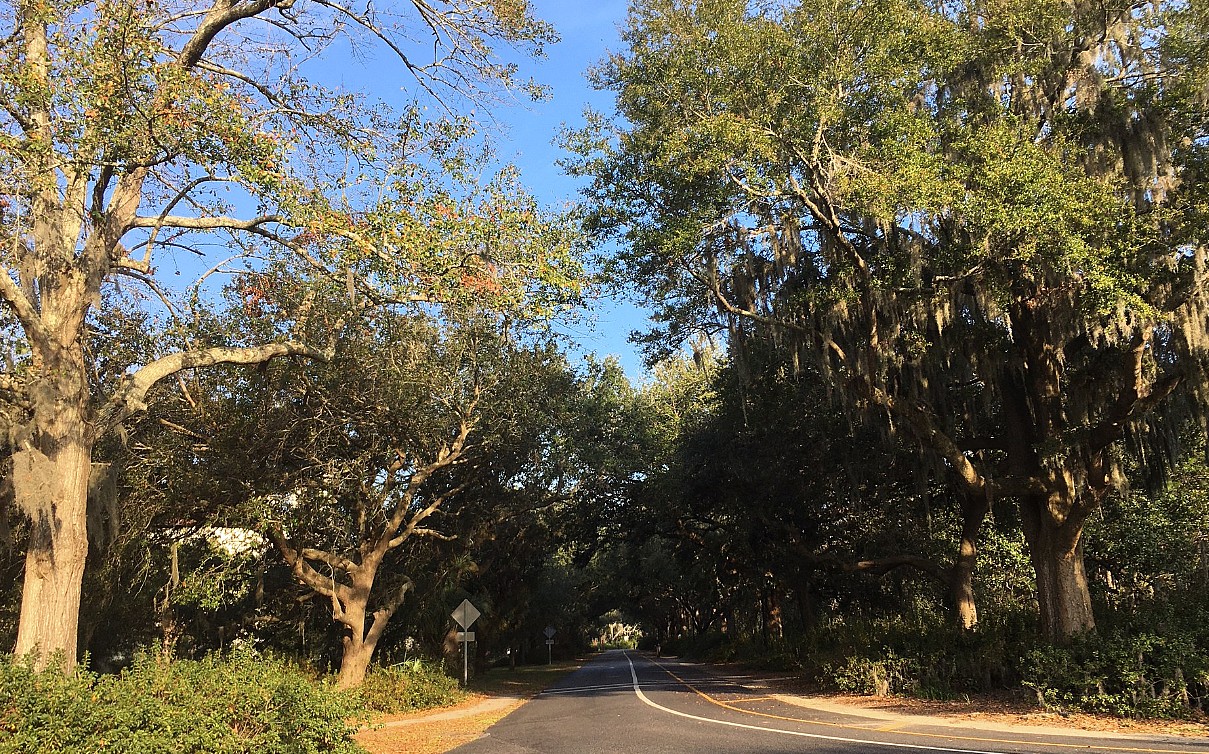
The exotic image above is in South Carolina, but may not be where you expect it. Send your best guess to feedback@statehousereport.com. And don’t forget to include your name and the town in which you live.
Our previous Mystery Photo
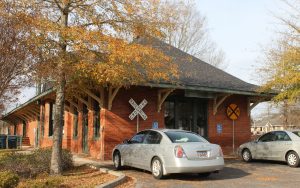 Our Jan. 3 image, “Mystery building” was a simple train depot sent in by reader David Taylor of Darlington. We didn’t realize how hard it would be to identify as many of them look alike and they are all over South Carolina. This one was in Ninety Six, S.C. Thanks David and thanks to all of you who submitted guesses from North Augusta to Moncks Corner to places in the Pee Dee.
Our Jan. 3 image, “Mystery building” was a simple train depot sent in by reader David Taylor of Darlington. We didn’t realize how hard it would be to identify as many of them look alike and they are all over South Carolina. This one was in Ninety Six, S.C. Thanks David and thanks to all of you who submitted guesses from North Augusta to Moncks Corner to places in the Pee Dee.
Congratulations to those who correctly identified the depot in the historic small town: Matthew Brady of North Charleston; Philip Cromer of Beaufort; David Lupo of Mount Pleasant; Don Clark of Hartsville; Vic Carpenter of Lugoff; Jim Pfeiffer of Greenwood, Jay Altman of Columbia; and George Graf of Palmyra, Va.
Cromer shared that the depot was “built in 1852 by Southern Railway (now Norfolk Southern). It is one of the oldest buildings in the Town of Ninety-Six and was used until 1970 when the tracks were taken up. SInce then it has been used as an event venue and meeting place for the community.”
Lupo shared that the Old 96 District website provided more history: “In 1856, U.S. Sen. Preston Brooks held his re-election speeches there after resigning for striking U.S. Sen. Charles Sumner of Massachusetts on the Senate floor with his cane. Over 10,000 people attended the re-election speeches, as well as The New York Times. The Depot has been preserved and currently still serves the community as a Community Center. It is listed on the National Registry of Historic Sites. Two State Historic Signs are located at the depot. The original desk and telegraph can been seen today at the 96 Visitor Center.”
- Send us a mystery: If you have a photo that you believe will stump readers, send it along (but make sure to tell us what it is because it may stump us too!) Send to: feedback@statehousereport.com and mark it as a photo submission. Thanks.
S.C. ENCYCLOPEDIA
A history of our General Assembly
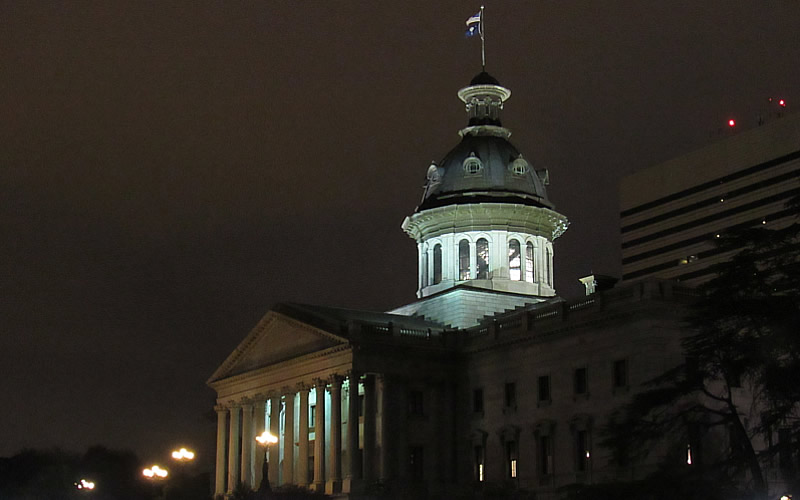
Editor’s Note: With the annual legislative session starting Tuesday, we thought you’d find this (long and sometimes sordid) history of the S.C. General Assembly to be interesting and helpful.
S.C. Encyclopedia | Much of the evolution of the South Carolina General Assembly revolves around attempts by conflicting factions to preserve or gain an advantage in representation. For example, increasingly powerful Carolina-based leaders struggled with proprietary and royal authorities during the colonial era to establish the dominance of the Commons House of Assembly as a basis for political independence (1670–1776). For much of the following century, the burgeoning upcountry struggled against an entrenched Lowcountry elite to increase its representation and influence in the legislature. In the social, economic, and political fallout during the decades after the Civil War, racial conflict dominated as a white minority struggled to maintain control of the General Assembly against the challenges of Reconstruction and the civil rights movement. After 1965, federally mandated redistricting and the creation of single member districts weakened rural delegations in favor of the state’s expanding urban and suburban population.
In the earliest years of South Carolina, the Lords Proprietors exercised lawmaking and taxing powers granted them by the king of England to establish a New World colony. The proprietors lived in England, so they selected a governor and, along with major resident landowners, a Grand Council to conduct the affairs of the colony. The proprietors retained veto authority over any Grand Council action. The Grand Council consisted of three groups: representatives of the proprietors, ten colonists chosen by leading landowners to act as a kind of upper legislative house, and a lower or Commons House of Assembly, which consisted of twenty members chosen by the “freemen” of the colony. The Commons House could only discuss proposals from other parts of the Grand Council. After 1682, however, all three groups had to approve any act, thus letting the Commons House exercise legislative initiative. This arrangement stayed intact until the proprietors were overthrown early in the eighteenth century by the general dissatisfaction of the Commons House, which was irked that their legislative initiatives were consistently vetoed by the proprietors.
Reestablished as a royal colony in 1719, a new legislative body was created consisting of two houses. An upper house was designated His Majesty’s Council (or Royal Council) and was composed of twelve persons appointed by the king to unlimited terms. The Commons House continued as a lower house, but this time with members elected by the colonists. To qualify as a Commons House member, one had to own five hundred acres and ten slaves or houses and town lots worth £1,000. Only adult white males could serve, and they did not have to be a resident of the parish from which they were elected. To be able to vote for a representative, one had to be a free white male, at least twenty-one years old who professed the Christian religion, a resident for one year, and own a freehold of fifty acres or pay twenty shillings a year in taxes to the colony. The governor was now sent over from England for the term of his service.
The Commons House continued to gain political momentum during the colonial era, especially by insisting on the right to draft bills about money. The colony gradually became an independent place, made rich by self-made men who used the Commons House to promote their interests while protecting themselves against unwanted challenges from the enslaved population or Native Americans.
From 1769 until the start of the Revolutionary War, the Commons House virtually ceased to function as a result of its involvement in the “Wilkes Fund Controversy.” John Wilkes attacked King George III in his newspaper and was charged with criminal libel. Wilkes became a symbol of the importance of a free press, of protection from unlawful arrest, and of the right of the people to elect any person “not disqualified” to Parliament. South Carolinians supported Wilkes, and the Commons House in 1769 authorized money to help him pay his debts—an act that was an affront to the king. In the aftermath, the Commons House deadlocked with the Royal Council, and civil government came to a virtual standstill.
The first state constitution in 1776 established a two-house legislative branch. The lower house, with 202 members, was elected by eligible voters from election districts made up of the parishes of the now disestablished Anglican Church. The lower house elected a thirteen member upper house called the Legislative Council. Both houses elected a president, who served as governor with a veto power, but who could not be reelected. In 1778 a new constitution renamed the president as governor, called the upper house, the Senate, and allocated additional lower house seats to the upcountry. Despite having a larger share of the state’s free population, the upcountry only received about forty percent of lower house seats. The political center of government remained in Charleston.
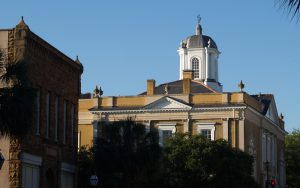
In 1788 a state convention met in Charleston to consider ratification of the new U.S. Constitution. The delegates were selected in the same Lowcountry-dominated proportions as seats in the General Assembly. The new constitution was ratified by the convention, with most Lowcountry delegates supporting it and most upcountry delegates opposing. Upcountry interests immediately pressed for a new convention to deal with representation issues in the state. In the resulting 1790 constitution, counties became the basis for upcountry representation, while parishes remained the representation basis for the Lowcountry. Both houses were elected by the people. The lower house was reduced to 124 members, a number which has continued to the present. The vote was still restricted to white males over twenty-one who owned fifty acres or a town lot. House members had to own five hundred acres and ten slaves; senators had to have twice these amounts. The General Assembly not only made laws, but elected the governor, judges, and many local officials.
In the so-called Compromise of 1808, the representation arrangements were changed so that election districts would have one representative for 1/62 of the state’s population and one representative for 1/62 of its taxable wealth. Each election district would have one senator, except for the city of Charleston which would have two. By recognizing population, the upcountry gained a sixteen vote majority in the lower house and a one vote majority in the Senate. This legislative system continued until the Civil War.
Federally appointed officials temporarily took control of the state after the Civil War. A fresh constitution was devised by whites in 1865, which differed but slightly from the 1790 version. Wealth and population continued as the basis for Senate and House members. Although qualified voters were allowed to elect the governor and presidential electors, the newly emancipated black population was barred from voting. The new General Assembly ratified the Thirteenth Amendment that ended slavery, but refused to ratify the Fourteenth Amendment, which gave civil rights to blacks. In addition the assembly enacted Black Codes that severely limited the rights and privileges of African Americans in the state. In response Congress closed down the state government in 1867 and demanded a new constitution that would recognize the citizenship rights of black South Carolinians.
The constitutional convention in 1868 was composed of seventy-six black and thirty-eight white delegates. Population alone became the basis for representation and the vote was provided for all males, regardless of race. The General Assembly struggled with issues such as funding a system of public education, rebuilding infrastructure, revitalizing the economy, and countering white opposition to Reconstruction. Spurred by the retreat of federal authority in the mid-1870s, white Democrats regained control of the General Assembly in 1876 and a one-party political system gradually emerged as a way to reestablish and ensure white supremacy.
By 1890 South Carolina looked a lot like it would look in 1950. Agriculture had turned into an established sharecropping system dependent on cotton; the building of railroads had created a new “small town” elite; textile mills had begun to migrate south; and Republicans—the hated party of Lincoln—had virtually disappeared from the state’s political landscape. Under these conditions, political conservatives—the elites and former Confederate leaders— came to prominence, but did little to relieve the discontent of white farmers who fumed over low prices, high interest and freight rates, and suspicion that the Conservatives were using black voters to stifle legislative responses to their needs.
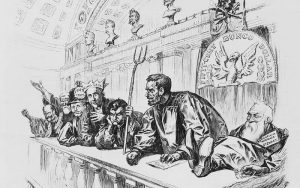 One leader, Benjamin R. Tillman, was able to articulate the farmers’ problems and set events in motion that produced yet another constitutional convention in 1895. The apparatus of government was not changed very much, but the politics were. One purpose was to get around the Fifteenth Amendment to the U.S. Constitution, which gave blacks the right to vote. To counter this, white delegates inserted a clause in the new state constitution that limited the right to vote to adult males who had paid a poll tax six months before the election and who were not guilty of certain crimes. The assumption was that most poor persons, especially blacks, could not pay the tax that early and, even if they did, would not subsequently be able to save a receipt to prove it. Even after passage of the Nineteenth Amendment to the U.S. Constitution in 1920 extended the vote to women, the electorate in South Carolina remained restricted to “acceptable” whites and blacks.
One leader, Benjamin R. Tillman, was able to articulate the farmers’ problems and set events in motion that produced yet another constitutional convention in 1895. The apparatus of government was not changed very much, but the politics were. One purpose was to get around the Fifteenth Amendment to the U.S. Constitution, which gave blacks the right to vote. To counter this, white delegates inserted a clause in the new state constitution that limited the right to vote to adult males who had paid a poll tax six months before the election and who were not guilty of certain crimes. The assumption was that most poor persons, especially blacks, could not pay the tax that early and, even if they did, would not subsequently be able to save a receipt to prove it. Even after passage of the Nineteenth Amendment to the U.S. Constitution in 1920 extended the vote to women, the electorate in South Carolina remained restricted to “acceptable” whites and blacks.
The continuation of counties as election districts gave rise to a “one county-one senator” system of representation in the General Assembly. The county, not population, was the basis for legislative representation. Each county was also apportioned at least one House member. In 1895 there were thirty-five counties. The number grew to forty-six by 1919. State senators dominated the politics and programs of their county through passage of annual “supply bills,” by which they controlled their county’s budget and most aspects of local government. Since no senator could oppose another’s supply bill without risking opposition to his own, legislative approval for a county’s schools, roads, courts, law enforcement, or other county purposes really rested in the hands of the senator. House members were dependent on what the senator wanted.
As “emperors of a county-based empire,” state senators were extraordinarily powerful political figures well into the twentieth century and the linchpins of the one-party system. Senator Edgar Brown of Barnwell County is perhaps the most potent example of a dominant senator. Speaker of the House Solomon Blatt, also of Barnwell County, advanced rural power in the S.C. House by appointing only one member from each county to a committee, thereby assuring that small counties would outnumber urban counties in most instances. Blatt and Brown were referred to by their critics as the “Barnwell Ring,” but more realistically the reference was to a statewide, rural “ring” that excluded growing urban areas from meaningful political power.
The power of rural delegations faced significant changes as national civil rights policies emerged. First the national Voting Rights Act of 1965 extended full voting rights to every individual regardless of race. An expanded electorate gradually demonstrated political success in gaining minority representation in the General Assembly. John Felder, Herbert Fielding, and I. S. Leevy Johnson, elected to the S.C. House in 1970, and I. DeQuincey Newman, elected to the S.C. Senate in 1983, became the first African Americans elected to the General Assembly in the twentieth century.
Next the county delegation system was fundamentally altered by U.S. Supreme Court decisions that mandated population as the basis for representation and prohibited gerrymandering, the arrangement of political district boundaries for the advantage of a particular interest. New districts with equal population per legislator would now have to be drawn after each national census. In 1971 the House first reapportioned in a plan that retained one representative per county. The tactic did not pass federal courts and the House subsequently reapportioned into single member districts on the “one person, one vote” principle. The Senate in 1968 tried a plan of twenty multimember districts through which each senator represented approximately the same number of people. After the 1970 census, forty-six senators were elected from sixteen districts. After 1980, however, the Senate moved to single member districts.
Election districts are adjusted every ten years to reflect changes in population. The redistricting decisions are in the hands of incumbent state legislators, although their decisions are subject to approval by the U.S. Department of Justice and have typically been challenged in federal courts. Since 2001, Republicans have had a majority in both houses and have allocated important committee assignments by party affiliation rather than by years of service. Legislative party caucuses have become more influential in raising campaign money. In addition to the Republicans and Democrats, African American legislators are organized into a separate caucus. The low number of women elected to the General Assembly continues as a topic of political comment by legislative observers. In 2003 only sixteen members of the General Assembly were women, the smallest percentage of female state legislators in the nation.
Contemporary legislators are aided in their work by increased staff support, computer assisted bill management, and the use of individual offices. Annual sessions begin in January and continue until May or June. Many study committees continue throughout the interim. A new General Assembly is convened every two years after November elections in even numbered years. House members are elected for two-year terms and senators are elected for four years. Each must reside in the district from which elected. House members must be a qualified elector at least twenty-one years of age and senators must be twenty-five years old.
– Excerpted from the entry by Cole Blease Graham Jr. This entry may not have been updated since 2006. To read more about this or 2,000 other entries about South Carolina, check out The South Carolina Encyclopedia by USC Press. (Information used by permission.)
ABOUT STATEHOUSE REPORT
Statehouse Report, founded in 2001 as a weekly legislative forecast that informs readers about what is going to happen in South Carolina politics and policy, is provided to you at no charge every Friday.
Meet our team
- Editor and publisher: Andy Brack, 843.670.3996
- Statehouse correspondent: Lindsay Street
Buy the book
Now you can get a copy of editor and publisher Andy Brack’s We Can Do Better, South Carolina! ($14.99) as a paperback or as a Kindle book ($7.99). . The book of essays offers incisive commentaries by editor and publisher Andy Brack on the American South, the common good, vexing problems for the Palmetto State and interesting South Carolina leaders.
More
- Mailing address: Send inquiries by mail to: 1316 Rutledge Ave., Charleston, SC 29403
- Subscriptions are free: Click to subscribe.
- We hope you’ll keep receiving the great news and information from Statehouse Report, but if you need to unsubscribe, go to the bottom of the weekly email issue and follow the instructions.
- © 2020, Statehouse Report, a publication of City Paper Publishing, LLC. All rights reserved.
- Read our sister publications: Charleston City Paper (every Wednesday) | Charleston Currents (every Monday)


